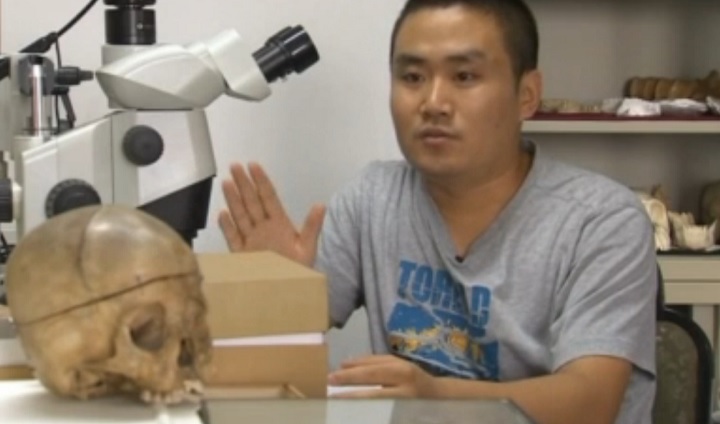-
Tips for becoming a good boxer - November 6, 2020
-
7 expert tips for making your hens night a memorable one - November 6, 2020
-
5 reasons to host your Christmas party on a cruise boat - November 6, 2020
-
What to do when you’re charged with a crime - November 6, 2020
-
Should you get one or multiple dogs? Here’s all you need to know - November 3, 2020
-
A Guide: How to Build Your Very Own Magic Mirror - February 14, 2019
-
Our Top Inspirational Baseball Stars - November 24, 2018
-
Five Tech Tools That Will Help You Turn Your Blog into a Business - November 24, 2018
-
How to Indulge on Vacation without Expanding Your Waist - November 9, 2018
-
5 Strategies for Businesses to Appeal to Today’s Increasingly Mobile-Crazed Customers - November 9, 2018
Ancient Teeth Discovered in China Challenging Migration Theory
“This is stunning, it’s major league”, said Michael Petraglia, an archaeologist from the University of Oxford in the United Kingdom, who was not involved in the study. He was not part of this study, but said it was one of the biggest finds from Asia in the past 10 years at least.
Advertisement
The teeth were found from the Fuyan Cave site in Hunan Province’s Daoxian County.
Upper (left) and lower teeth of anatomically modern Homo sapiens from the Fuyan Cave. In all likelihood, the researchers say, these remains were simply dragged into the cave by predators that lived there.
In all 47 teeth were discovered in Daoxian, which is in the southern Hunan province of China.
“This is a milestone discovery because the species we found in the Fuyuan Cave is from well-developed modern humans, nearly identical to living humans”, said Liu Wu from the Institute of Vertebrate Paleontology and Paleoanthropology at the Chinese Academy of Sciences. The team report their results in Nature today. They contained no radioactive carbon (which has nearly vanished after 50,000 years). But those routes always put the homo sapiens’ arrival in China at less than 45,000 years ago, after the species had already reached Europe. Older traces of modern humans have been seen outside Africa, such as the roughly 100,000-year-old remains from the Skhul and Qafzeh Caves in Israel.
This is 20,000 years earlier than the widely accepted “Out of Africa” migration that led to the successful peopling of the globe by our species. It’s possible that Neanderthals, who were in Europe at the time the owners of these teeth were in China, were in the way of a westward migration.
The first appearance of humans in the eastern Mediterranean and East Asia has remained a mystery due to lack of fossil evidence. Instead, they more closely resemble teeth from contemporary modern humans. Thereafter with great struggle, these relatively primitive relatives to modern day humans successfully completed their migration to the rest of the world in a single huge wave between 50,000 to 70,000 years ago.
The researchers found these teeth are more than 80,000 years old, and may date back as far as 120,000 years. Martinón-Torres postulates the frigid climate of the Ice Age and the presence of Neanderthals in Europe may have driven early humans east to the warmer climes and emptier lands of Asia.
“The predominantly colder winter conditions of the enormous landmass between Europe and northern China may better explain the earlier colonization of southern zones”, Dennell wrote.
Advertisement
This means that everything below those stalagmites must be older than 80,000 years old; the human teeth could be as old as 125,000 years, according to the researchers.




























